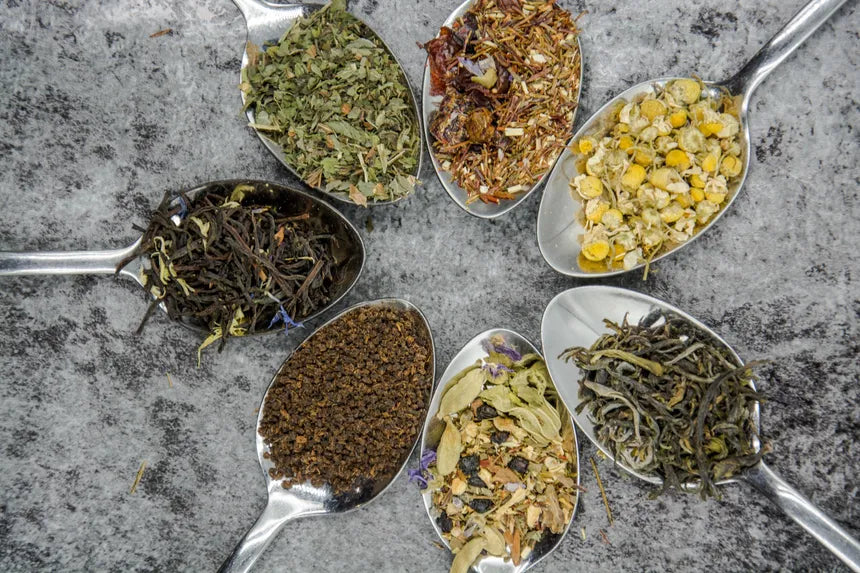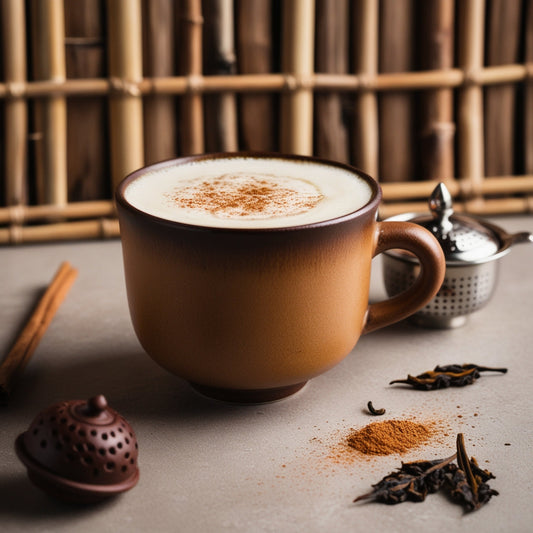Overview
Do you know where did green and black tea originated from?
While it may seem like a simple question, the history of these teas is rich. Knowing their origins can help you enjoy it even more. This article guides you through both of these teas also about Lipton black tea, where did all of these teas come from and does green tea and black tea come from same plant.
Table of content
- Introduction
- Green tea
- Black Tea
- Lipton Black Tea
- Where Does Most of the Green Tea Comes From ?
- Do Green and Black Tea Come From the Same Plant ?
- Where Does Lipton Black Tea Comes From ?
- Conclusion
Introduction
Green and black teas are more than just popular teas, they are deeply connected with history and culture in various parts of the world. From ancient China to the tea plantations of Kenya, the origins of these teas are fascinating. Knowing where green and black tea come from can give you a deeper understanding of their differences and why they are enjoyed by so many.
Green Tea
Green tea has a rich history, stretching back to thousands of years. Its story begins in China, where it was first used for medicinal purposes. According to a legend, Emperor Shennong discovered green tea in 2737 BCE when leaves from a nearby tea plant accidentally fell into his pot of boiling water. After tasting it, the emperor realised its potential, and the use of green tea spread across China.
Over time, green tea became an integral part of Chinese culture, evolving into a daily ritual for many. By the 8th century, it had reached Japan, where people not only enjoyed its flavour but also added it into spiritual practices. Japanese monks discovered that green tea helped them stay alert during meditation.
The unique flavour of green tea shines through its minimal processing. After harvesting, producers quickly steam or pan-fire the leaves to prevent oxidation. This method preserves its signature fresh and grassy taste, distinguishing it from other types of tea.
In addition to its rich cultural significance, green tea has gained global popularity for its potential health benefits. It boasts high levels of antioxidants, particularly catechins, which researchers believe support heart health, reduce inflammation, and assist in weight management. A study highlighted that regular consumption of green tea can improve cholesterol levels, further supporting cardiovascular health.

Black Tea
While green tea was the earliest form of tea, black tea gained popularity later. Black tea also originated in China, but the processing method that makes black tea distinct emerged much later. Black tea’s popularity grew as it became a significant part of trade between the East and the West, especially during the British Empire's expansion.
Unlike green tea, black tea undergoes full oxidation. After harvesting, producers allow the leaves to oxidise completely, transforming them into a dark brown or black colour. This process imparts a bold and robust flavour to black tea, making it a popular choice for those who prefer a stronger cup.
The journey of black tea around the world is a fascinating one. It became a staple in places like India and Sri Lanka, where tea plantations were established by the British in the 19th century. Over time, Indian black teas such as Assam and Darjeeling gained international recognition for their unique flavours.
Black tea offers more than just taste. Black tea can improve mental focus due to its caffeine content. One study suggests that black tea consumption may enhance attention and alertness while also offering heart health benefits similar to green tea. Additionally, black tea is high in antioxidants called theaflavins, which may support cardiovascular health and protect against oxidative stress.
Lipton Black Tea
Lipton Black Tea is one of the most well-known tea brands worldwide. It has its own story of origin. Sir Thomas Lipton founded the Lipton tea company in the late 1800s with the goal of making high-quality tea affordable for everyone. This vision made Lipton a household name.
Lipton sources much of its black tea from Kenya, which is a country known for producing some of the best tea in the world. The country’s high-altitude tea plantations, abundant rainfall, and rich volcanic soil create the perfect conditions for growing strong and flavourful tea. Kenyan black tea, known for its rich, bold taste, makes up a large portion of what goes into Lipton tea bags.
In addition to Kenya, Lipton also sources its tea from other prominent tea-growing regions like India and Sri Lanka. These diverse sourcing locations allow Lipton to blend teas with consistent flavour profiles that consumers recognise in every cup.
Lipton actively demonstrates its commitment to sustainability as a core aspect of its story. The company sources much of its tea from Rainforest Alliance-certified farms, ensuring that environmentally friendly practices are implemented throughout the tea production process.
Where Does Most Green Tea Come From?
Green tea primarily comes from China, the largest producer of green tea globally. In fact, China accounts for over 80% of the world’s green tea supply. Provinces like Zhejiang, Fujian, and Jiangxi are the primary tea-producing regions in China.
Japan is the second-largest producer of green tea. Japanese green teas like Sencha and Matcha are widely known for their distinct flavours. Shizuoka and Kagoshima are two of the top green tea-producing regions in Japan. Japanese green tea is often harvested by machine, while in China, hand-picking is more common, especially for high-quality varieties.
While these two countries dominate green tea production, other regions, including Taiwan, Korea, and Vietnam, also produce smaller quantities of green tea, adding to the global diversity of this tea.
Types of Green Tea
There are several types of green tea, each with its own unique flavour and processing method. Here are some of the most popular types:
- Sencha: This is the most common type of green tea in Japan, known for its refreshing and slightly sweet flavour.
- Matcha: A powdered form of green tea, Matcha is popular for its rich taste and high concentration of antioxidants.
- Dragon Well (Longjing): One of the most famous Chinese green teas, Dragon Well has a mellow, slightly nutty flavour.
- Gunpowder: Known for its tightly rolled leaves that resemble gunpowder pellets, this green tea has a bold and smoky flavour.
- Gyokuro: A high-quality Japanese green tea that is shaded before harvest, resulting in a sweeter and more delicate flavour.
Each of these green teas offers a unique experience. Most of these are similar in benefits and side effects.
Do Green and Black Tea Come from the Same Plant?
Yes, both come from the same plant Camellia sinensis. The major difference between the two lies in how producers process the tea leaves. After harvesting, they steam or pan-fire the leaves intended for green tea to prevent oxidation. This method preserves the green colour and fresh, light taste of the tea.
Black tea, on the other hand, undergoes full oxidation. The leaves are left to oxidise for longer, resulting in their darker colour and stronger flavour. This difference in processing is what makes green tea more delicate and black tea bolder in taste.
It’s amazing that such different teas can come from the same plant. This diversity in flavour is what makes tea such a versatile and beloved teas worldwide.
Where Does Lipton Black Tea Come From?
Lipton Black Tea primarily comes from Kenya, but the brand also sources tea from other notable regions like India and Sri Lanka. Kenya’s tea plantations are renowned for producing high-quality leaves, and the region's climate perfectly suits the cultivation of robust black tea.
India plays a significant role as well, offering varieties like Assam and Darjeeling, which Lipton sometimes adds into its blends. Sri Lanka, celebrated for its Ceylon tea, also adds to Lipton’s global tea supply. By sourcing from these diverse regions, Lipton ensures a consistent flavour that tea drinkers around the world love.
Lipton’s dedication to sustainable farming and responsible sourcing helps ensure that its tea remains high-quality while minimising environmental impact. This commitment to quality and sustainability has helped the brand maintain its global reputation as one of the leaders in the tea industry.

Conclusion
Green and black teas, while coming from the same plant, have unique origins and distinct processing methods that give them their individual characteristics. Green tea has its roots in ancient China, with its health benefits and delicate flavour making it a staple in Japanese and Chinese cultures. Black tea, with its strong flavour and longer shelf life, gained international popularity, becoming integral to the tea traditions of countries like India, Sri Lanka, and Kenya.
Lipton Black Tea, one of the most recognisable brands worldwide, sources much of its tea from Kenya, but also includes teas from India and Sri Lanka. Whether you enjoy the fresh taste of green tea or the boldness of black tea, understanding where your tea comes from enhances the overall experience.
Looking to try something new then consider Pu-erh tea from Puerh Craft. It offers a unique flavour profile and a rich history that tea lovers may find fascinating.
Q&A Section
Q1. What are the main differences between green and black tea?
A1. Green tea and black tea come from the same plant, Camellia sinensis, but they undergo different processing methods. Green tea is steamed or pan-fired to prevent oxidation, while black tea is fully oxidised, resulting in its darker colour and stronger flavour.
Q2. How does the processing of tea affect its health benefits?
A2. The processing methods influence the types of antioxidants present in the tea. Green tea is high in catechins, which support heart health, while black tea contains theaflavins that may enhance cardiovascular health and mental focus.
Q3. Why is Lipton Black Tea popular worldwide?
A3. Lipton Black Tea is well-known for its consistent flavour and quality, sourced from regions like Kenya and India. Its commitment to sustainability and affordability has made it a favourite among tea drinkers globally.






